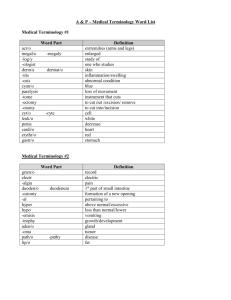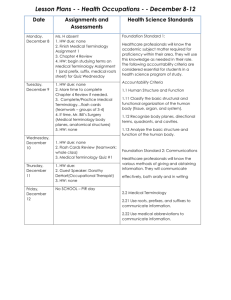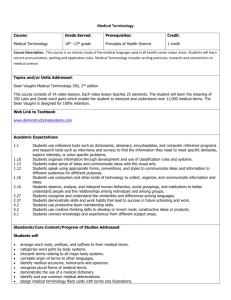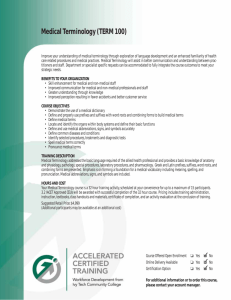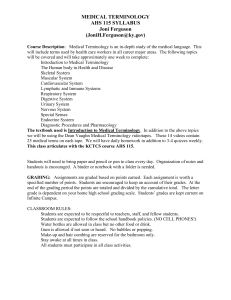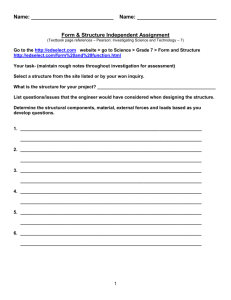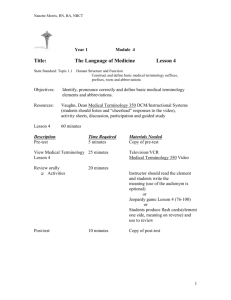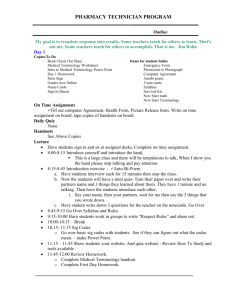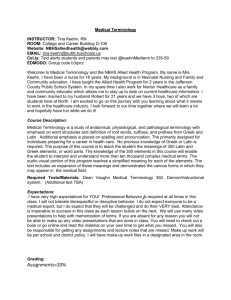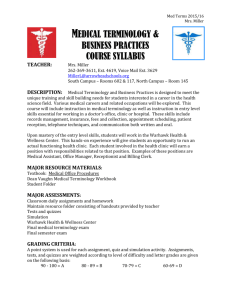Medical Vocabulary Test Information
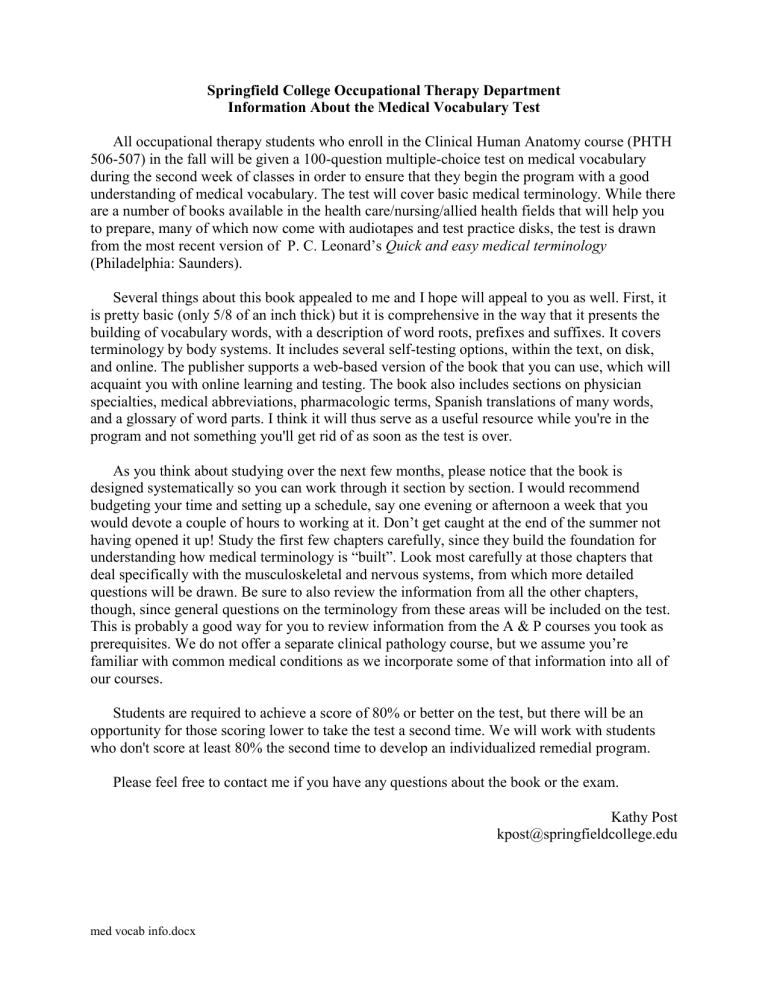
Springfield College Occupational Therapy Department
Information About the Medical Vocabulary Test
All occupational therapy students who enroll in the Clinical Human Anatomy course (PHTH
506-507) in the fall will be given a 100-question multiple-choice test on medical vocabulary during the second week of classes in order to ensure that they begin the program with a good understanding of medical vocabulary. The test will cover basic medical terminology. While there are a number of books available in the health care/nursing/allied health fields that will help you to prepare, many of which now come with audiotapes and test practice disks, the test is drawn from the most recent version of P. C. Leonard’s Quick and easy medical terminology
(Philadelphia: Saunders).
Several things about this book appealed to me and I hope will appeal to you as well. First, it is pretty basic (only 5/8 of an inch thick) but it is comprehensive in the way that it presents the building of vocabulary words, with a description of word roots, prefixes and suffixes. It covers terminology by body systems. It includes several self-testing options, within the text, on disk, and online. The publisher supports a web-based version of the book that you can use, which will acquaint you with online learning and testing. The book also includes sections on physician specialties, medical abbreviations, pharmacologic terms, Spanish translations of many words, and a glossary of word parts. I think it will thus serve as a useful resource while you're in the program and not something you'll get rid of as soon as the test is over.
As you think about studying over the next few months, please notice that the book is designed systematically so you can work through it section by section. I would recommend budgeting your time and setting up a schedule, say one evening or afternoon a week that you would devote a couple of hours to working at it. Don’t get caught at the end of the summer not having opened it up! Study the first few chapters carefully, since they build the foundation for understanding how medical terminology is “built”. Look most carefully at those chapters that deal specifically with the musculoskeletal and nervous systems, from which more detailed questions will be drawn. Be sure to also review the information from all the other chapters, though, since general questions on the terminology from these areas will be included on the test.
This is probably a good way for you to review information from the A & P courses you took as prerequisites. We do not offer a separate clinical pathology course, but we assume you’re familiar with common medical conditions as we incorporate some of that information into all of our courses.
Students are required to achieve a score of 80% or better on the test, but there will be an opportunity for those scoring lower to take the test a second time. We will work with students who don't score at least 80% the second time to develop an individualized remedial program.
Please feel free to contact me if you have any questions about the book or the exam.
Kathy Post kpost@springfieldcollege.edu med vocab info.docx

